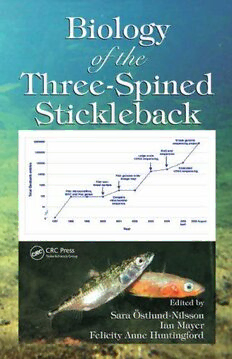
Biology of the Three-Spined Stickleback (Marine Biology) PDF
406 Pages·2006·6.72 MB·English
Most books are stored in the elastic cloud where traffic is expensive. For this reason, we have a limit on daily download.
Preview Biology of the Three-Spined Stickleback (Marine Biology)
Description:
Highlighting the growing importance of the sticklebacks as a model species in emerging fields such as molecular genetics, genomics, and environmental toxicology, Biology of the Three-Spined Stickleback examines data from researchers who use studies of the stickleback to address a wide range of biological issues. This state-of-the-art volume is the first comprehensive review of the biological research on this important fish in more than a decade. The book presents current knowledge on the geographic and genetic variation of the ubiquitous three-spined stickleback and explores the possibility of any subdivision within currently recognized stickleback species. It provides a summary of important new molecular tools available, and how these tools can be used to study the genetic architecture and molecular basis of evolutionary change in different stickleback populations around the world. The book also lays out their physiology, historical factors, geographic distribution, and describes the features of their biology that seem to promote rapid speciation. It covers reproductive behavior in chronological order, and the mechanisms and selection pressures behind the activities that sticklebacks perform during the different phases of the breeding season. Full of cutting-edge data, the book discusses the umwelt of the three-spine stickleback, with particular reference to how that world interacts with and shapes intraspecific communication during the breeding season. It covers developments in stickleback reproductive physiology from 1991 onward and summarizes studies performed — mainly within the fields of behavioral ecology and physiology — on some of the less-studied stickleback species. The book touches on the biology, in particular the behavioral ecology, of the 15-spined stickleback. Emphasizing the importance of the sticklebacks to a variety of disciplines, this book presents information that is both extensive and authoritative.
See more
The list of books you might like
Most books are stored in the elastic cloud where traffic is expensive. For this reason, we have a limit on daily download.
